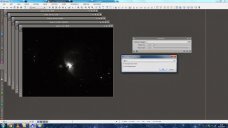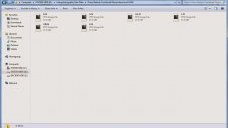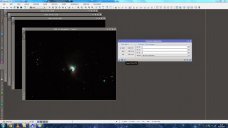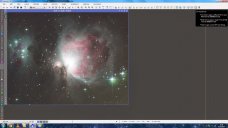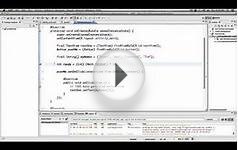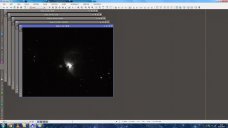 Above we have our Red, Green, Blue and Luminance images as well as narrowband Hydrogen-Alpha and Oxygen-III images. All six images have been fully calibrated and have been registered with each other and cropped equally such that they all line up all upon each other. All images are currently in 32-bit format.
Above we have our Red, Green, Blue and Luminance images as well as narrowband Hydrogen-Alpha and Oxygen-III images. All six images have been fully calibrated and have been registered with each other and cropped equally such that they all line up all upon each other. All images are currently in 32-bit format.
If you are not using a monochrome CCD camera's images, you should have a single colour image of your target as well as one or two monochrome narrowband images (monochrome as the user is assumed to have extracted the appropriate channel, e.g. Red channel for Hydrogen-Alpha).
We note first and foremost that since this tutorial is not a complete workflow, we will not be using or manipulating our Luminance image at all and it will be ignored for the remainder of this tutorial.
STEP 2. Performing a LinearFit on all the monochrome images
Users of colour cameras should skip this step. ll the monochrome images have their histogram peaks on the same place. A quick inspection of the histograms of different images will show that the peaks lie in a different place. In order to make the colour-combination process more accurate, we shall first use the LinearFit tool to place all peaks in the same place.
ll the monochrome images have their histogram peaks on the same place. A quick inspection of the histograms of different images will show that the peaks lie in a different place. In order to make the colour-combination process more accurate, we shall first use the LinearFit tool to place all peaks in the same place.
We start by opening all the images we will be using - Red, Green, Blue, Hydrogen-Alpha and Oxygen-III.
To start off, we will first set our RGB working space to equal weighting.
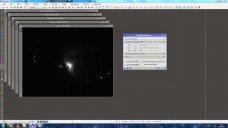 een and Blue all to 1.000000. Once done, click the circle Apply Global button and then close the tool.
een and Blue all to 1.000000. Once done, click the circle Apply Global button and then close the tool.
We now open the LinearFit tool.
We will need to pick one of the images as a reference image with which all the images are fit accordingly.
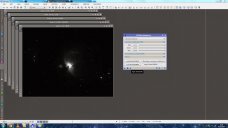 ctrum. Therefore, click the square icon next to the Reference image text box and select the green image from the list, here called G.
ctrum. Therefore, click the square icon next to the Reference image text box and select the green image from the list, here called G.
What we now remain to do is apply this to all our images, except our Green image as that is our reference image. To do this, click to select each of the other images one-by-one and for each one, click the square Apply button on LinearFit.

